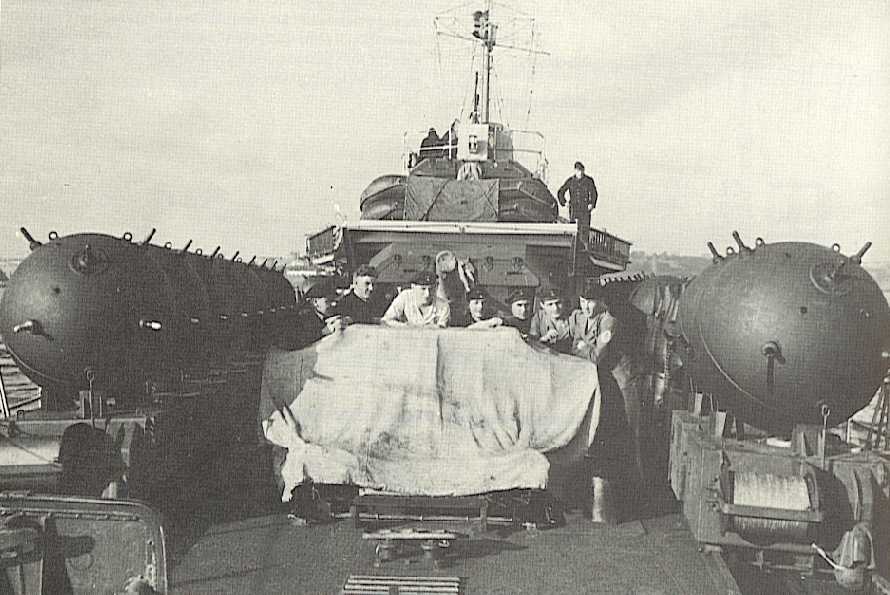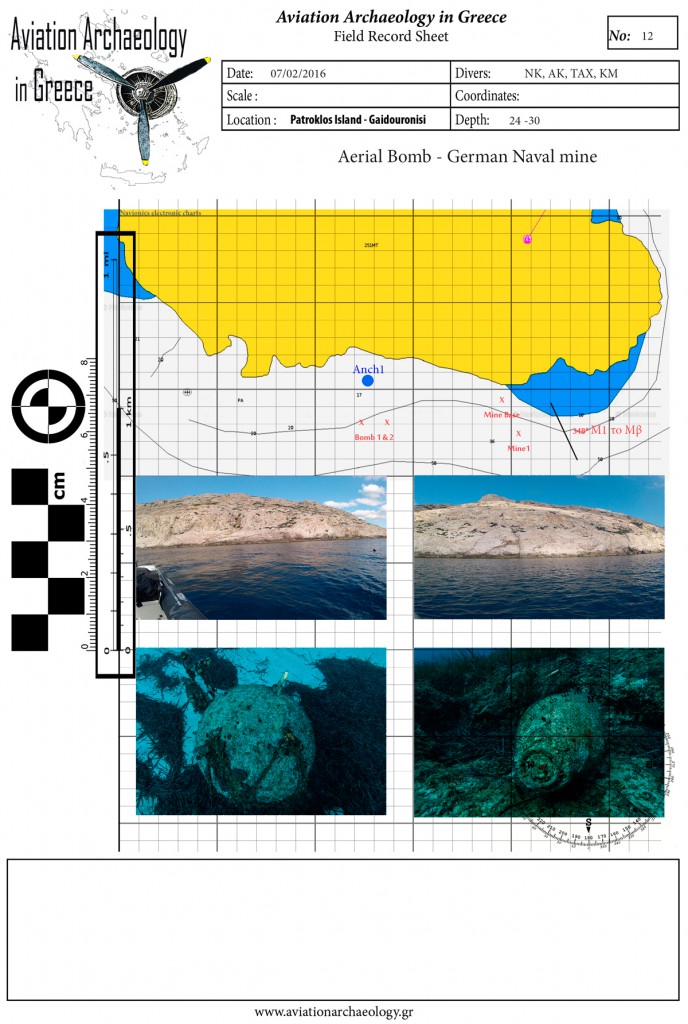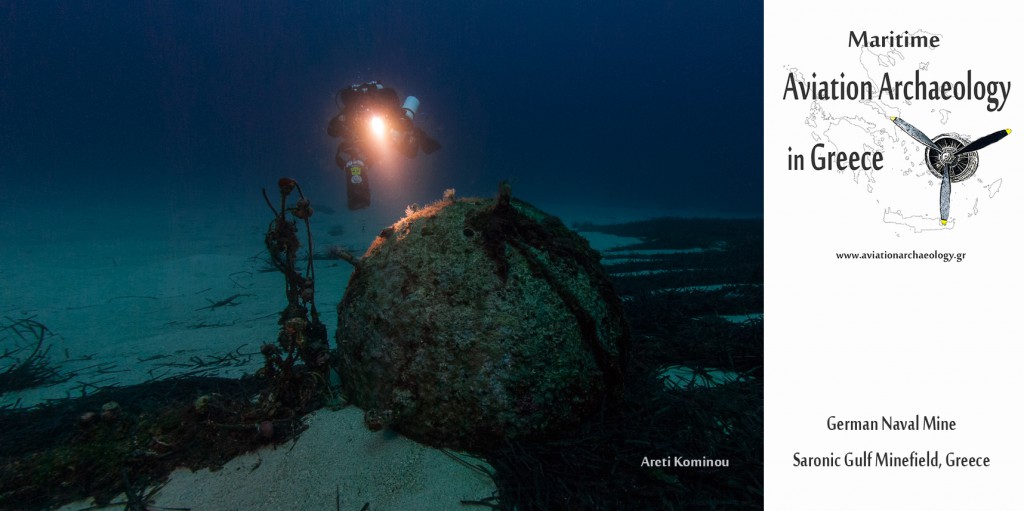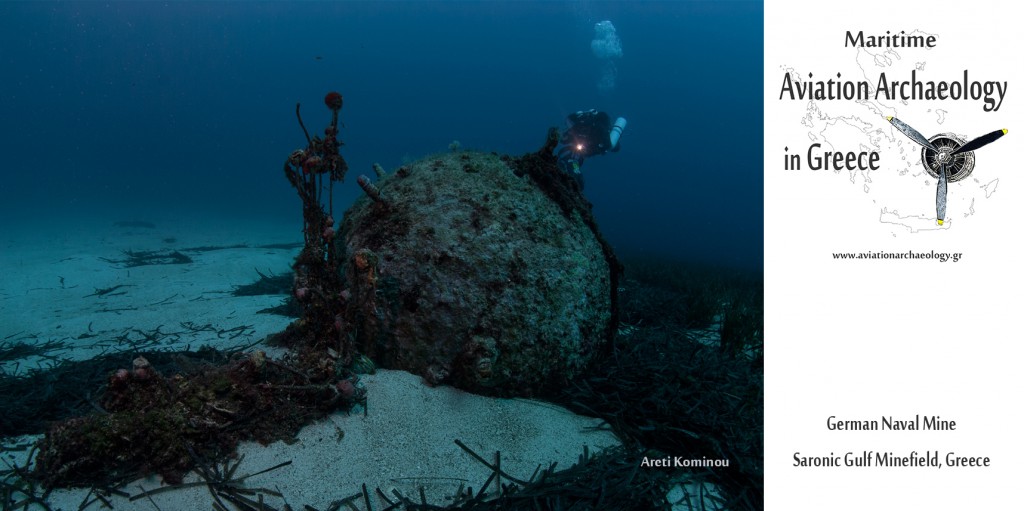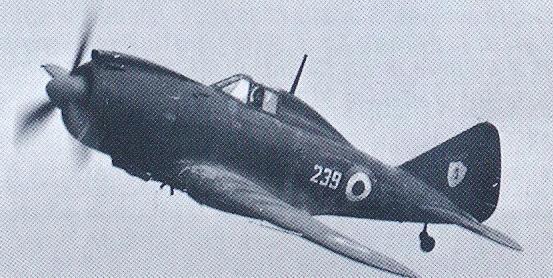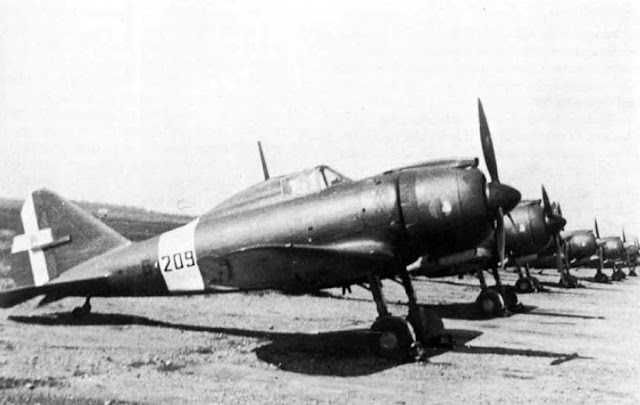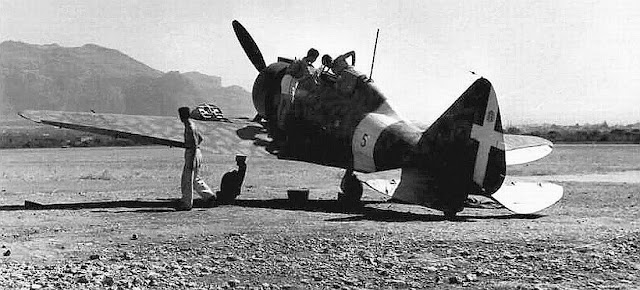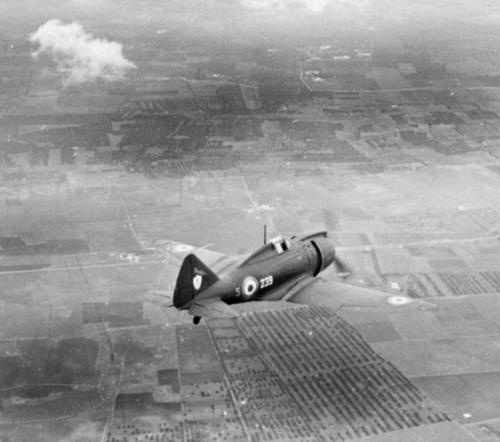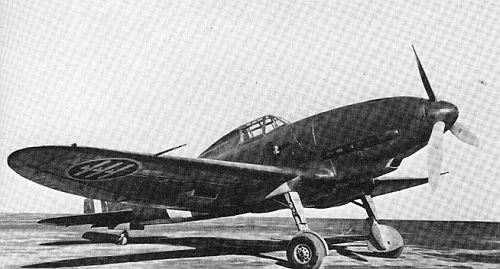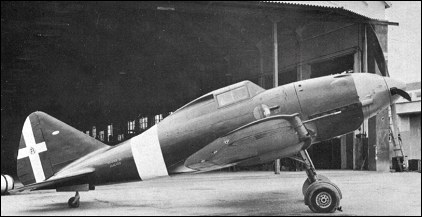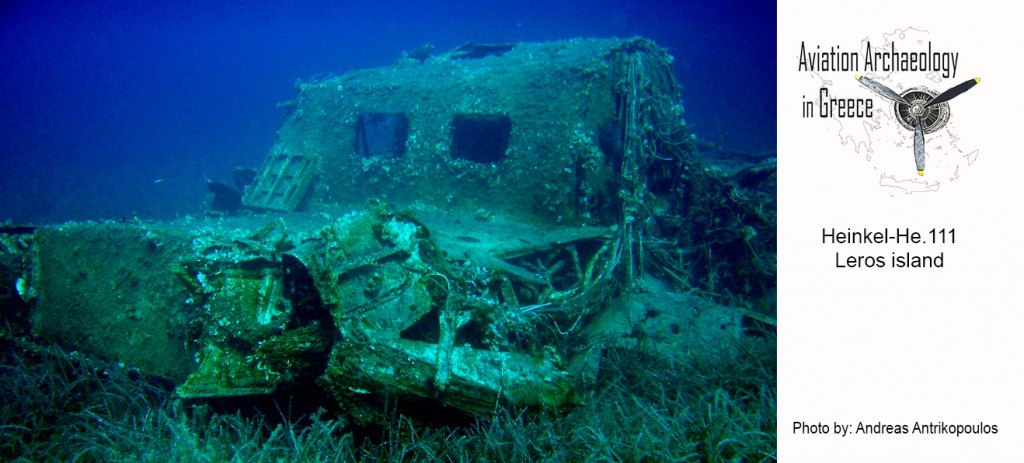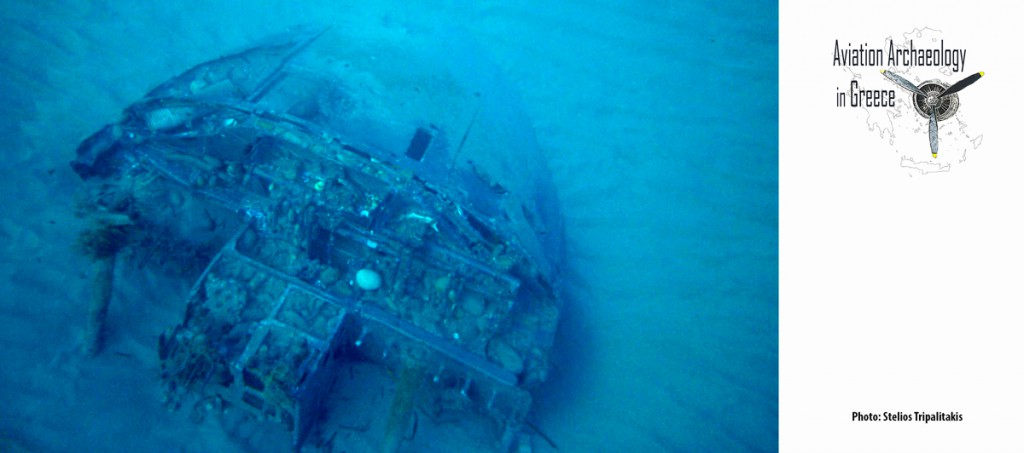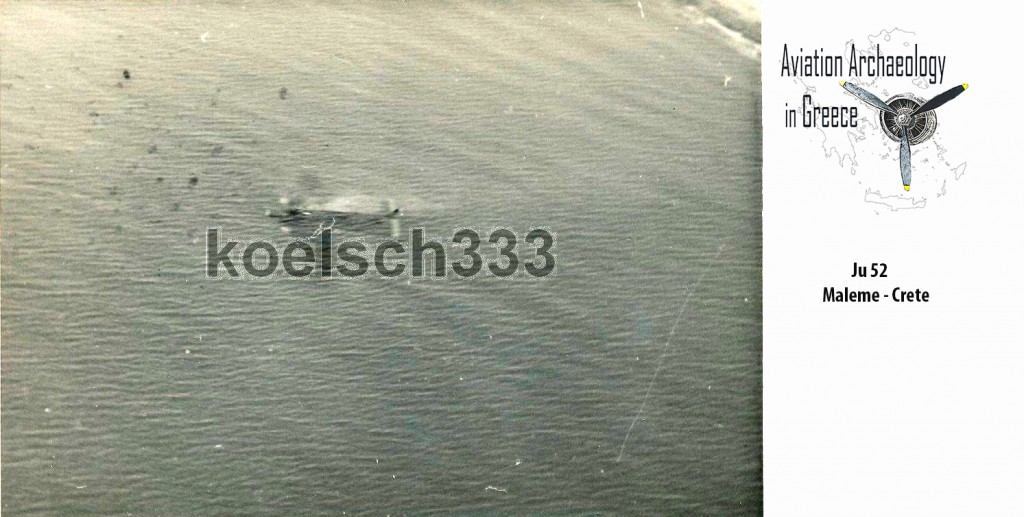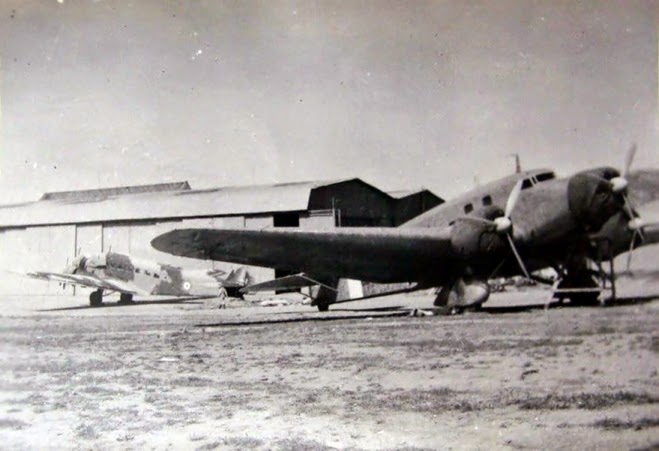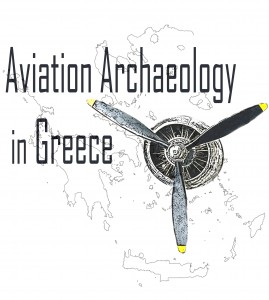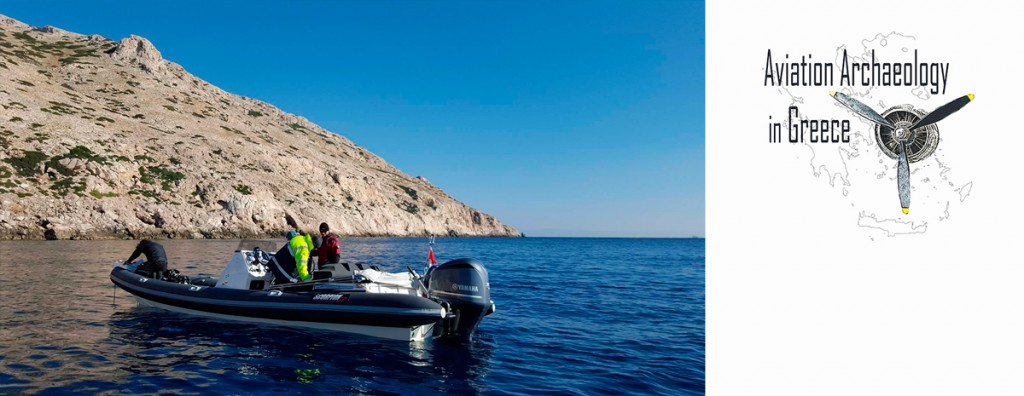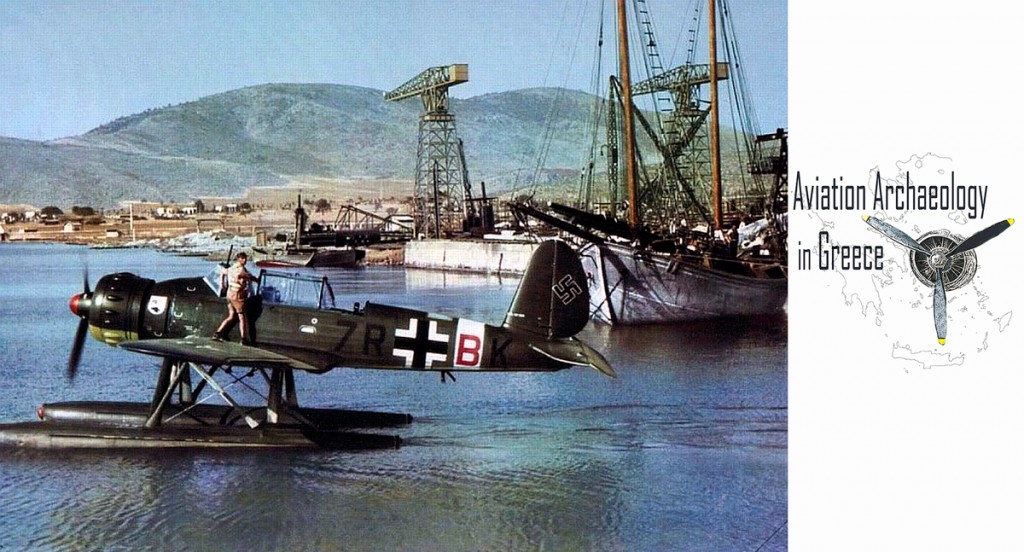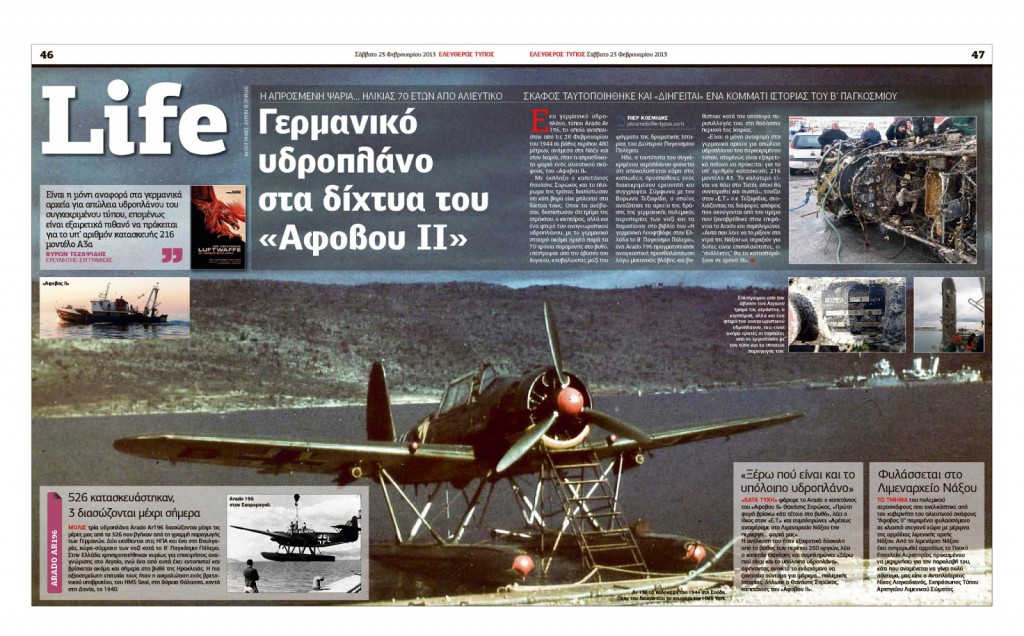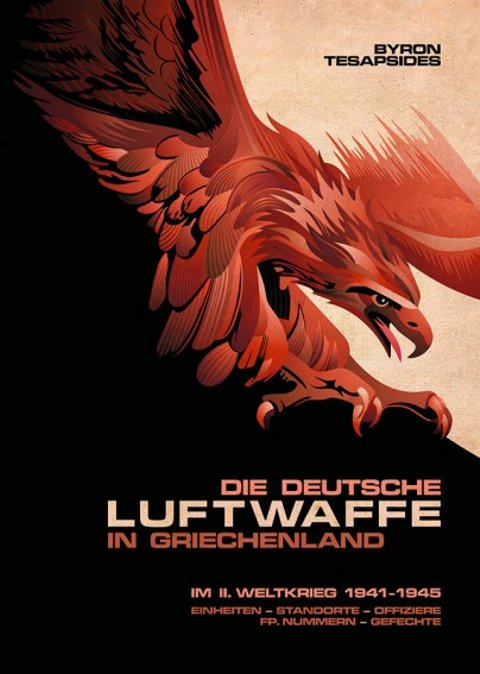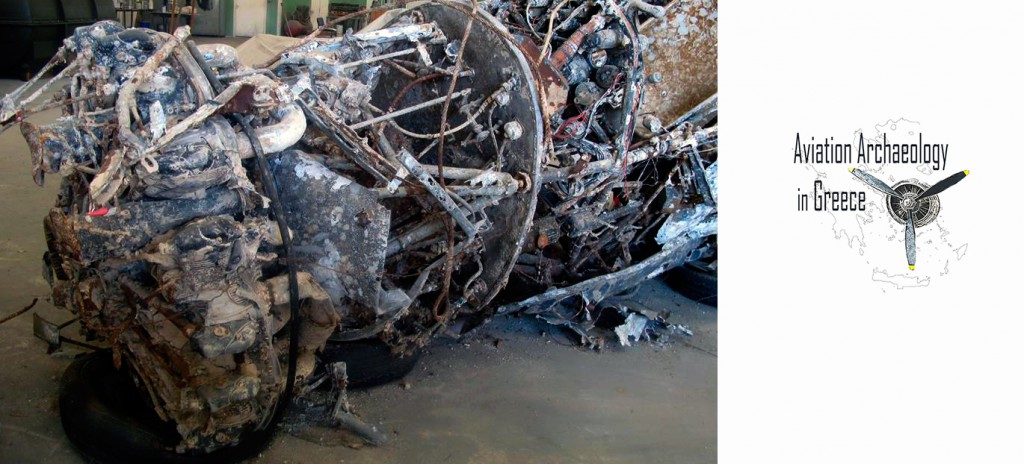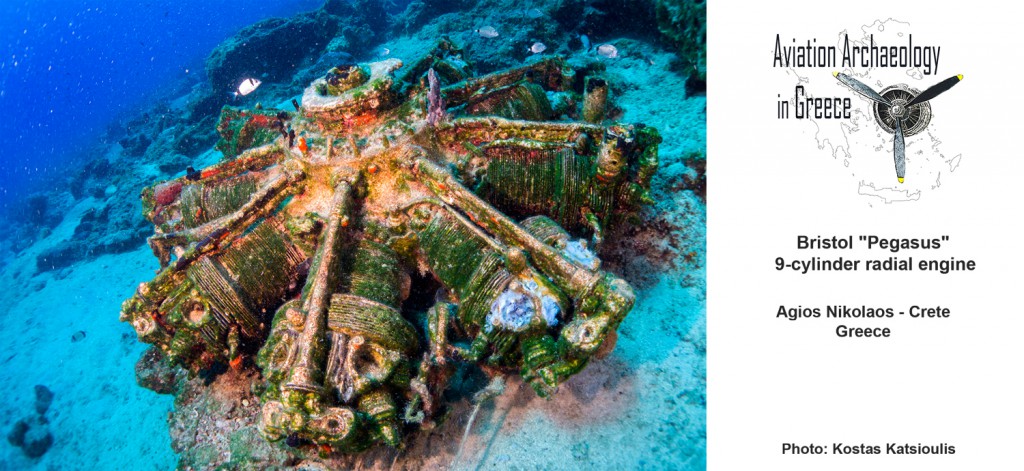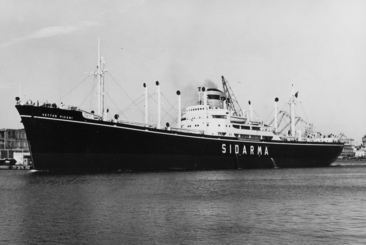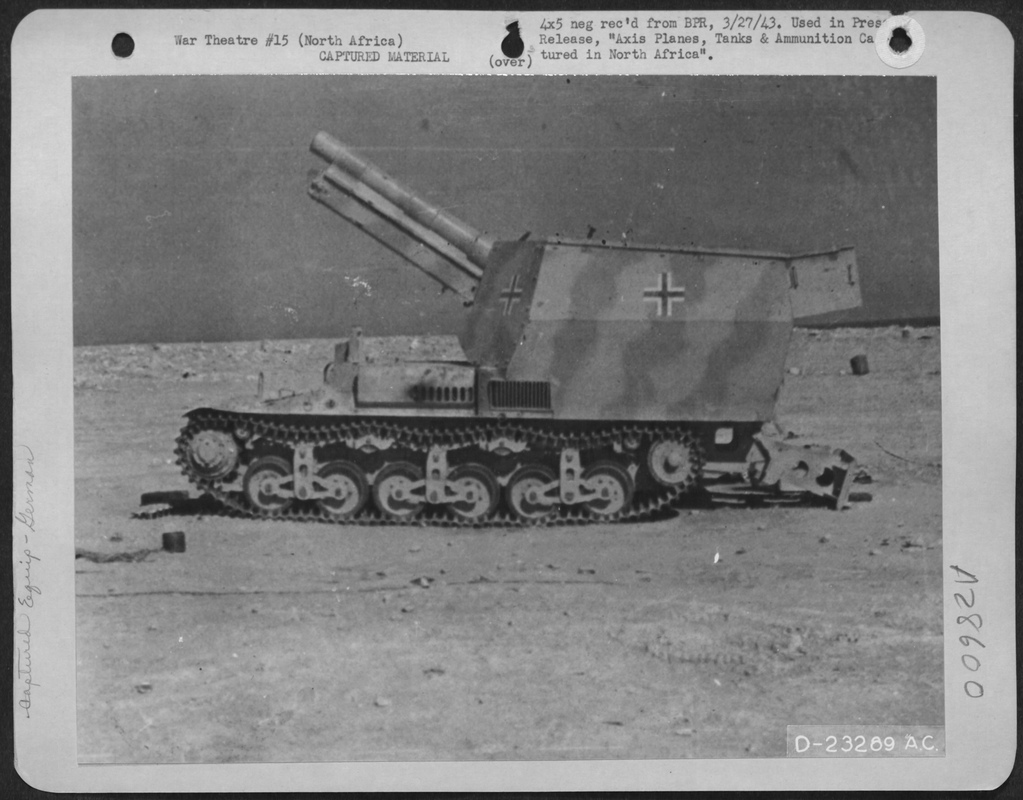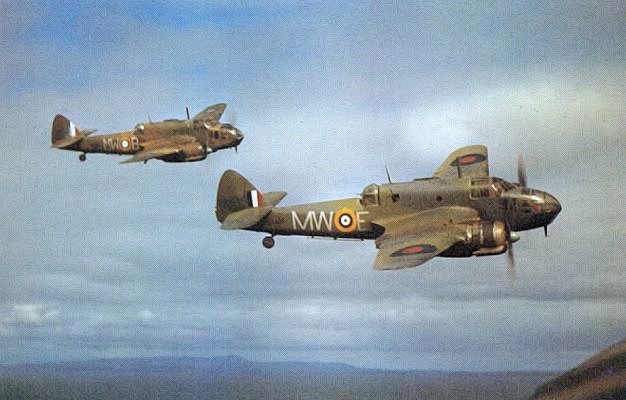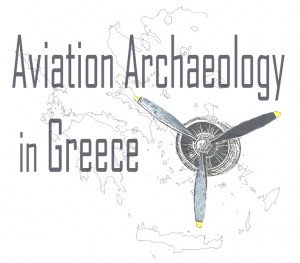
Λίστα αεροσκαφών B’ Παγκοσμίου Πολέμου.
The List of aircraft of World War II includes all aircraft and aerialvehicles used by the combatants of World War II.
It is also appropriate to list aircraft and vehicles developed but notoperationally used in the war, as well as certain rockets and missiles.
In parentheses is listed the date in service followed by the developing nation and major wartime users.
Fighting aircraft
Fighter aircraft
* Avia B–534 (Pre–war; Czechoslovakia, Bulgaria)
* Bell P–39 Airacobra (1941; United States, Soviet Union)
* Bell P–63 Kingcobra (1942; United States, Soviet Union)
* Bloch MB.151 (Pre–war; France, Greece)
* Bloch MB.152 (1939; France)
* Brewster Buffalo (1939; United States, Finland, Netherlands, New Zealand, United Kingdom, Australia)
* Bristol Beaufighter (1940; United Kingdom, Australia)
* Bristol Blenheim ( France )
* Curtiss Hawk 75 (1939; United States, Finland, France, India, Thailand, United Kingdom)
* Curtiss P–40 Tomahawk/Kittyhawk/Warhawk (Pre–war; United States, Australia, Canada, China, New Zealand,South Africa, United Kingdom)
* de Havilland Mosquito (1941; United Kingdom, Canada)
* de Havilland Vampire (1945; United Kingdom)
* Dewoitine D.520 (1940; France, Bulgaria)
* Fairey Fox (Pre–war; United Kingdom, Belgium)
* Fiat CR.42 (Pre–war; Italy, Belgium, Hungary)
* Fiat G.50 (Italy, Finland, NDH)
* Fiat G.55 (1943; Italy)
* Focke–Wulf Fw 190 (1941; Germany)
* Fokker D.XXI (Pre–war; Netherlands, Finland)
* Fokker G.I (Pre–war; Netherlands)
* Gloster Gladiator (Pre–war; United Kingdom, Finland, Norway, Belgium)
* Gloster Meteor (1944; United Kingdom)
* Grumman F4F Wildcat (1940; United States)
* Grumman F6F Hellcat (1943; United States)
* Hawker Hurricane (1937; United Kingdom, Canada, Finland, India, New Zealand, Belgium)
* Hawker Tempest (1944; United Kingdom, New Zealand)
* Heinkel He 112 (Pre–war; Germany, Romania)
* Heinkel He 162 (1945; Germany)
* Heinkel He 219 (1943; night fighter; Germany)
* IAR 80 (1942; Romania)
* Junkers Ju 88 (1940 as a night fighter; Germany)
* Kawanishi N1K–J (1944; Japan)
* Kawasaki Ki–45 (1942; Japan)
* Kawasaki Ki–61 (1943; Japan)
* Lavochkin LaGG–1 (Pre–war; Soviet Union)
* Lavochkin LaGG–3 (1941; Soviet Union)
* Lavochkin La–5 (1941; Soviet Union)
* Lavochkin La–7 (1941; Soviet Union)
* Lockheed P–38 Lightning (1941; United States)
* Macchi MC.200 (1939; Italy)
* Macchi MC.202 (1941; Italy)
* Macchi MC.205 (1943; Italy)
* Messerschmitt Bf 109 (1937; Germany,Kingdom of Yugoslavia , Bulgaria, Finland, Hungary, Romania)
* Messerschmitt Bf 110 (1938; Germany)
* Messerschmitt Me 163 (1943; Germany)
* Messerschmitt Me 262 (1944; Germany)
* MiG–1 (1940; Soviet Union)
* MiG–3 (1941; Soviet Union)
* Mitsubishi A6M Zero (Pre–war; Japan)
* Morane–Saulnier M.S.406 (1939; France, Finland)
* Nakajima Ki–27 (1938; Japan, Thailand)
* Nakajima Ki–43 (1941; Japan, Thailand)
* Nakajima Ki–44 (1942; Japan)
* Nakajima Ki–84 (1943; Japan)
* North American P–51 Mustang (1942; United States)
* Northrop P–61 Black Widow (1944; United States)
* Polikarpov I–15 (Pre–war; Soviet Union)
* Polikarpov I–16 (Pre–war; Soviet Union)
* PZL P.7 (1932; Poland)
* PZL P.11 (Pre–war; Poland)
* PZL P.24 (Pre–war; Poland, Greece)
* Reggiane Re.2000 (Italy, Hungary)
* Reggiane Re.2001 Italy
* Reggiane Re.2005 (1943; Italy)
* Republic P–47 Thunderbolt (1942; United States)
* Rogozarski IK–3 (Kingdom of Yugoslavia)
* Supermarine Spitfire (1938; United Kingdom, Australia, Canada, India, New Zealand, South Africa)
* VL Myrsky (1943; Finland)
* Vought F4U Corsair (United States, New Zealand)
* Yakovlev Yak–1 (1940; Soviet Union)
* Yakovlev Yak–3 (1943; Soviet Union)
* Yakovlev Yak–7 (1942; Soviet Union)
* Yakovlev Yak–9 (1942; Soviet Union)
Attack aircraft
* Aichi D3A (1937; Japan)
* Aichi B7A (1945; Japan)
* Bristol Beaufort (1940; British Commonwealth)
* Curtiss SB2C Helldiver (1943; United States)
* Douglas A–20 Havoc (1941; United States)
* Douglas SBD Dauntless (1940; United States)
* Douglas TBD Devastator United States
* Fairey Barracuda (1942; United Kingdom)
* Fairey Swordfish (1936; United Kingdom)
* Grumman TBF Avenger (1942; United States)
* Hawker Typhoon (1941; United Kingdom, New Zealand)
* Henschel Hs 129 (1938; Germany)
* Ilyushin Il–2 (1941; Soviet Union)
* Junkers Ju 87 (1937; Germany)
* Mitsubishi Ki–30 (Japan, Thailand)
* Nakajima B5N (1938; Japan)
* Nakajima B6N (1942; Japan)
* Petlyakov Pe–2 (1941; Soviet Union)
* Rogozarski R–100 NDH,Kingdom of Yugoslavia
* Vultee A–31 Vengeance (1942; United States)
* Yokosuka D4Y (1942; Japan)
Bomber aircraft
* Amiot 143 (1936; France)
* Arado Ar 234 (1944; Germany)
* Armstrong Whitworth Whitley (1937; United Kingdom)
* Avro Manchester (United Kingdom)
* Avro Lancaster (1942; United Kingdom)
* Bloch MB.210 (1937; France)
* Boeing B–17 Flying Fortress (1940; United States)
* North American B–25 Mitchell | B–25J (solid nose version) (1930; Netherlands, United States)
* Boeing B–29 Superfortress (1940; United States)
* Bristol Blenheim (1937; United Kingdom ,Kingdom of Yugoslavia )
* CANT Z.1007 (1938; Italy)
* Consolidated B–24 Liberator (1940; United States)
* Dornier Do 17 (1937; Germany,Kingdom of Yugoslavia)
* Dornier Do 217 (1941; Germany)
* Douglas A–20 Boston (1941; United States)
* Douglas A–26 Invader (1944; United States)
* Fairey Battle (1937; United Kingdom)
* Fiat BR.20 (1938; Italy)
* Focke–Wulf Fw 200 Condor (1940; Germany)
* Fokker C.X (1933; Netherlands, Finland)
* Handley Page Halifax (1940; United Kingdom)
* Handley Page Hampden (1938; United Kingdom)
* Heinkel He 111 (1936; Germany)
* Heinkel He 177 (1943; Germany)
* Ilyushin Il–4 (1938; Soviet Union)
* Junkers Ju 88 (1938; Germany)
* Kawasaki Ki–48 (1940; Japan)
* Liore et Olivier LeO 451 (1939; France)
* Martin A–22 Maryland (1939; France, United Kingdom
* Lockheed A–29 Hudson (1939; United States)
* Lockheed PV–2 Ventura (1942; United States, British Commonwealth, United Kingdom)
* Martin A–30 Baltimore United States, United Kingdom
* Martin B–26 Marauder (1941; United States)
* Martin 139 WS (Netherlands, Thailand)
* Mitsubishi G3M (1937; Japan)
* Mitsubishi G4M (1941; Japan)
* Mitsubishi Ki–21 (Japan, Thailand)
* Nakajima Ki–49 (1938; Japan)
* North American B–25 Mitchell (1941; United States)
* Piaggio P.108 (1942; Italy)
* PZL P.23 (1936; Poland)
* PZL P.37 (1938; Poland)
* Savoia–Marchetti SM.79 (1937; Italy)
* Savoia–Marchetti SM.81 (1935, Italy)
* Short Stirling (1940; United Kingdom)
* Tupolev SB (1934; Soviet Union)
* Tupolev Tu–2 (1944; Soviet Union)
* Vickers Wellington (1938; United Kingdom)
* Yokosuka P1Y (1945; Japan)
Flying Boats and Sea Planes
* PB2Y Coronado (1937; United States, United Kingdom)
* Consolidated PBY Catalina (1935; United States, United Kingdom, Canada)
* PBM Mariner (1939; United States, United Kingdom, Australia, Netherlands)
Transports
* Douglas C–47 Skytrain (1935; United States, United Kingdom)
Rockets and missiles
Surface to surface missiles
* V–1 Flying Bomb (1943; Germany)
* V–2 rocket (1944; Germany)
* Rheinmetall–Borsig Feuerlilie (Germany)
Surface to air missiles
* EMW C2 Wasserfall Missile (Germany)
Air to surface missiles
* Blohm & Voss BV 246 “Hagelkorn” (Germany)
Air to air missiles
* Ruhrstahl X–4 (Germany)
Liaison Aircraft
*Aeronca L–3
*Fieseler Fi 156 “Storch”
*Piper L–4, O–59 and NE–1
*Stinson L–5
*Taylorcraft L–2
*Westland Lysander
*Mitsubishi Ki–46
*Nakajima C6N
*Yokosuka R2Y
Experimental aircraft
Experimental aircraft are those that never saw operational service or were never intended to do so. They may beaircraft purely designed to test and develop new theories and research on aviation, or may be intended asprototypes of combat or other types of aircraft. Ultimately, if the aircraft was deployed to regular squadrons or usedin more than the rarest of operational missions by other units, it should be listed above under its appropriate type.Some types which did not reach flight status may also be listed here.
* Bell P–59 Airacomet (United States)
* Gloster E.28/39 (United Kingdom)
* Gotha Go 229 (Germany)
* Heinkel He 178 (Germany)
* Heinkel He 280 (Germany)
* Henschel Hs 132 (Germany)
* Junkers Ju 187 (Germany)
* Junkers Ju 287 (Germany)
* Junkers Ju 390 (Germany)
* FH–1 Phantom (United States)
* Messerschmitt Me 264 (Germany)
* Nakajima J9Y (Japan)
* Nakajima Ki–201 (Japan)
* Messerschmitt Me 163 (Germany))
External links
* [http://www.daveswarbirds.com/usplanes/ American Aircraft of World War 2]
* [http://www.aircraftaces.com/ World War Two Aircraft]
* [http://www.acepilots.com/planes/main.html World War Two Combat Planes]
* [http://www.virtualmuseum.ca/pm.php?id=record_detail&fl=0&lg=English&ex=00000104&rd=63873&hs=0 Prince Edward Island – Memoriesof WWII]

